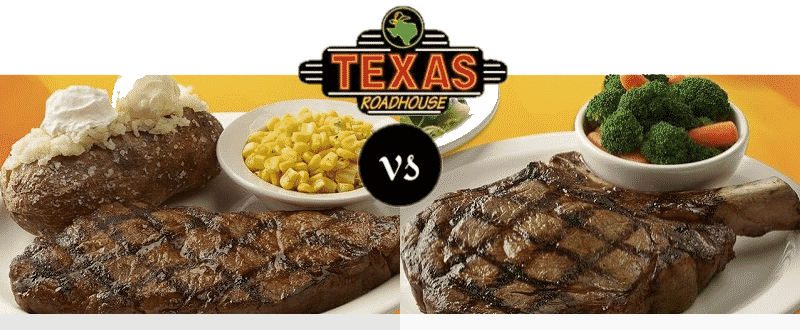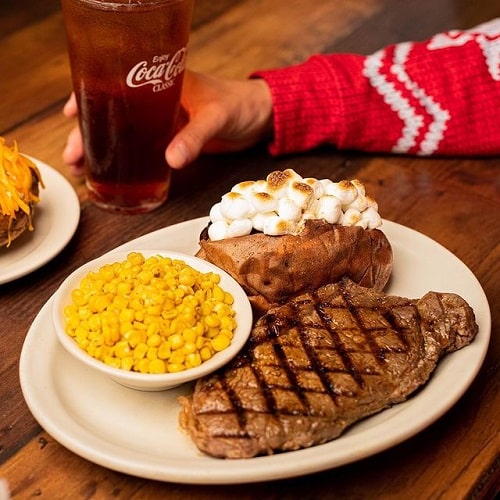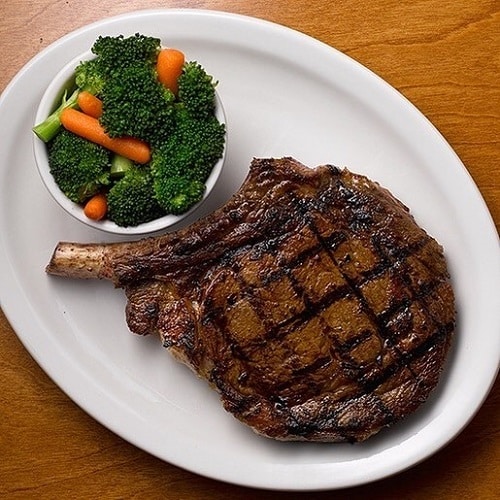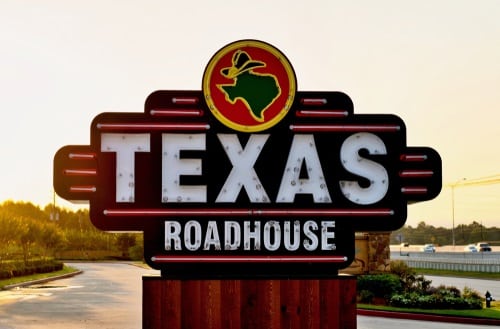
If you have ever visited Texas Roadhouse, you have probably wondered what the difference is between Fort Worth ribeye and bone-in ribeye.
Everyone loves a good steak. But what steak cut should you choose? Steak is available in various cuts, including filet, sirloin, New York strip, and porterhouse T-bone.
Each steak cut has its pros and cons. Tender cuts like fillet can dry out easily, while cuts with a bone can provide complex flavor but can be tough.
Two popular cuts include Fort Worth ribeye and bone-in ribeye. This article will explore the similarities and differences between the Fort Worth ribeye and the bone-in ribeye.
Fort Worth Ribeye vs Bone in Ribeye
| Fort Worth Ribeye | Bone-in Ribeye |
| 2 side dishes of your choice | 2 side dishes of your choice |
| Boneless | Bone-in |
| Cooked at a higher temperature | Cooked at a lower temperature |
| Cooked to perfection | Rarer around the bone |
Fort Worth Ribeye

Fort Worth ribeye has become extremely popular at Texas Roadhouse. It comes in 10 oz., 12 oz., and 16 oz. portion sizes. This is a very juicy steak cut, and it is tender enough to melt in your mouth.
The Fort Worth ribeye is very flavorful, as it is a succulent, marbled cut of steak. The steak is served with your choice of two sides to compliment it.
There are many sides to choose from, including buttered corn, seasoned rice, fresh vegetables, sauteed onions, sauteed mushrooms, Caesar salad, mashed potato, and baked potato.
The beef chili side works incredibly well with the Fort Worth ribeye. The sweet potato fries and steak fries also complement the steak.
Bone-in Ribeye

Texas Roadhouse also serves bone-in ribeye steak. This steak comes in 20 oz. portions, making them perfect for hungry customers.
Bear in mind that since this cut contains a bone, you will be getting less meat than if you ordered a 20 oz. of Fort Worth ribeye.
The bone-in ribeye steak is usually seasoned with salt and pepper and then seared for approximately two minutes on each side.
After the steak has been seared, it is roasted in the oven until it is medium-rare. You can also opt for a grilled bone-in ribeye steak. You will then grill your steak at a medium-high temperature.
You can also choose to have your bone-in ribeye broiled. This creates a very tender steak, which is easy to cut into.
Your bone-in ribeye steak will always be cooked to perfection, as a meat thermometer is used to check the internal temperature of the steak.
The bone-in ribeye steak is taken from the primal rib of a cow. The short rib is sometimes used for bone-in ribeye steaks. This cut is trendy in the United States.
The bone in the bone-in ribeye steak creates a complex flavor and keeps the steak succulent. Since the bone is dense, it needs to be cooked at a much lower temperature than you would cook a steak without a bone.
The steak needs to be cooked for longer to ensure that it cooks through. The area around the bone will often be much rarer than the rest of the steak.
This is normal and should not be considered undercooked. The bone-in ribeye steak can be charred easily. Since this steak cut is marbled, it can be grilled or slow-roasted.
The marbling results in a very tender, succulent steak. This is usually the reason why people choose the bone-in ribeye steak.
It would be best if you don’t discard bones from the bone-in ribeye steak because you can use them to make delicious veal stock.
When the bones are roasted, they release the bone marrow. The bone marrow becomes soft and rich when it is cooked. It develops a complex, nutty flavor that can flavor a whole pot of stock.
Conclusion

Both Fort Worth ribeye and bone-in ribeye steaks are served at Texas Roadhouse. Both steak cuts are served with your choice of two sides, which complement the steak.
These two steak cuts are trendy. The Fort Worth ribeye is cooked at a higher temperature than the bone-in ribeye, which needs to be cooked slowly to ensure it cooks through to the bone.
Despite the difference in cooking techniques, both steak cuts are tender and juicy. Do not be alarmed if your bone-in ribeye steak is rare around the bone. This is normal.